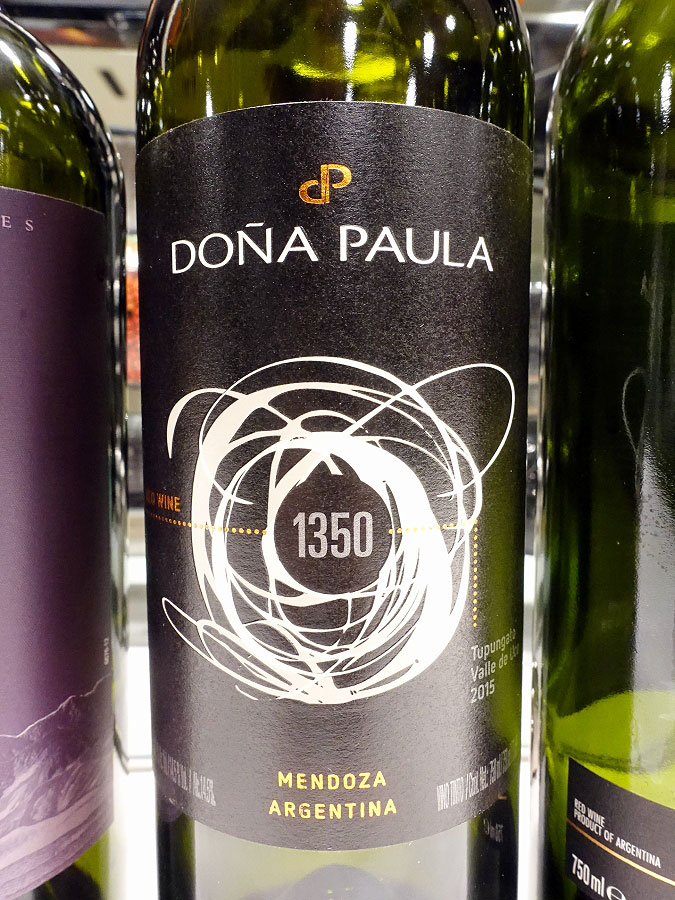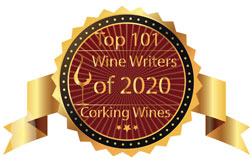In , I had the pleasure of attending a Tastes of Argentina masterclass to explore the climatic and cultural factors shaping today's wines from Argentina. The event was hosted by The Consulate of Argentina, represented by Maria de los Angeles Arrieta, Deputy Consul General Trade Commissioner from Consulate General of Argentina, and leading the masterclass was Christopher Waters, Dip. WSET.
Argentina is the 2nd largest country in South America and 8th largest country in the world. The winegrowing regions in Argentina are located approximately between 30° to 50° latitude - the sweet-spot for grape-growing in the Southern Hemisphere, and within the same latitude range as other major wine regions in the South Hemisphere such as Chile, South Africa, Australia, and New Zealand. There are six major factors that make the wines of Argentina unique and compelling.
We begin with the first factor - altitude. The vineyards in Argentina are planted within a range at the low-end of 1,000 ft. (300 m) all the way up to 10,000 ft. (3,000 m) above sea level. These high altitudes help create a variety of terroirs and microclimates that distinguish Argentina from the rest of the world. It was interesting to learn that even though vines are planted at high altitudes, many of the vineyards are located on plateaus and not on steep slopes. Planting on plateaus allows for easier monitoring during the grape-growing season as well as harvests that are less labour intensive. The highest vineyards are located in the cooler climate Salta region in northern Argentina, falling under the Winkler I index and are some of the coolest vineyards on the planet.
Terroir is the second major factor. Being one the largest countries in the world, spanning nearly 3,800 kilometres from north to south, the terroir is quite diverse due to wide-ranging altitudes and latitudes. With vineyards across large areas, it is only natural to see variability in soils. The presence of the Andes mountains and rainfall regime are also key factors that affect the terroir. All of these factors contribute to the great diversity of terroirs in Argentina.
The third major factor that makes the wines of Argentina unique is the climate - which is dry and continental. Argentina is very unique in that its traditional wine regions are located in high-altitude valleys, far from the oceans, making Argentina one of the few continental viticultural areas in the world. Moreover, because the Andes mountain range is to the west of Argentina, the cold winds and rain are essentially blocked, leaving only hot and dry winds to flow through the vines. This dryness of the climate helps maintain vineyard health almost completely naturally, which contributes to the production of organic wines.
Poor (or low fertility) soils make for better wine, and the low fertility soils in Argentina are fairly young and nutrient-deprived, with low organic matter, leading to desirable restricted vine growth. Poor soils also help promote natural development of the grape with genuinely distinct flavours.
Argentina also has great water purity, with the main source of irrigation in mountain valleys coming from meltwater in the Andes. This pure, snowmelt water from the mountains is free from any contaminants.
The final factor that makes Argentine wine unique is the new generation of winemakers. The first vitis vinifera wines were produced by the Spanish settlers in 1551. In 1853, the first School of Agriculture was formed and the wine industry subsequently expanded nationwide. The modernization of the wine industry in Argentina began in the 1990’s with local and foreign investments in the search for new markets to export Argentinian wine.
Today, a new generation of agricultural engineers, oenologists, and winemakers is taking the lead and breaking new ground when it comes to producing quality wines. Sebastian Zuccardi, Laura Catena, Luis Reginato, and Alejandro Vigil are just some of the people making exceptional wines in Argentina. With the help of technology applied to the study of soils and climate, new Geographical Indications (GIs) were discovered. Similar to systems used in other winegrowing regions, GIs indicate the origin of the grape and its differential attributes.
Together, the six factors of altitude, terroir, climate, soil, water, and the new generation of winemakers combine to give Argentina it’s unique habitat for creating cutting edge wines.
Malbec is usually the first wine that comes to mind when thinking of Argentine wine. It is not surprising given that Malbec is the most widely planted and most important vitis vinifera varietal in Argentina. However, other varieties are becoming more prevalent. In addition to tasting some fine Malbec wines at this masterclass, the 12-wine structured tasting also featured wines made with Cabernet Sauvignon, Chardonnay, Torrontés, and Cabernet Franc that are thriving in Argentina and gaining recognition across the globe. Tasting notes of my favourite wines from this wine tasting are provided below. Most of the wines are currently available or coming soon to the LCBO, or otherwise can be ordered via the Agent.
Tasting Notes:
CATENA ZAPATA WHITE BONES ADRIANNA VINEYARD CHARDONNAY 2016 - Gualtallary, Uco Valley, Mendoza, Argentina (#514844) (XD) - $125A super premium Chardonnay with a clean, medium+ intensity nose of pear, apple, orchard fruit and some limestone mineral, earthy, leesy, and buttery characters, all of which show up beautifully on the nicely balanced, medium-full bodied palate. There's some structure to the fruit, along with a touch of bitterness. Earthy-mineral elements linger on the long, juicy finish. Agent: Noble Estates. Score: 93 pts
EL ESTECO 1945 OLD VINES TORRONTÉS 2018 - Calchaquí Valley, Argentina (#010695) (XD) - $25.95
From vines planted in 1945, the lovely, highly aromatic nose jumps out of the glass with clean, floral and herbal aromas, along with hints of lemon citrus, white grapefruit, and salty mineral notes adding complexity. There's very good fruit on the medium-bodied palate with tension between the fruit and acids. Very nice aroma replays on the flavour profile. Excellent length on the long, earthy and minerally finish. Agent: Vins Dandurand. Score: 92 pts
EL ENEMIGO CABERNET FRANC 2015 - Gualtallary, Uco Valley, Mendoza, Argentina (#011813) (XD) - $23.95
From a specific plot of the Adrianna Vineyard in Gualtallary, the medium-high intensity nose delivers classic Cabernet Franc herbaceous, tobacco, and dark berry aromas along with some vanilla spice notes. It is medium+ bodied with very nice aromas replays on the flavour profile, plus some dark currant, dark cherry, and smoky notes adding complexity. Acids are crunchy, while tannins are smooth and refined. Long, balanced finish and should drink well over the next 5-6 years. Coming to LCBO VINTAGES Mar. 7, 2020. Agent: Noble Estates. Score: 89 pts
TRAPICHE MEDALLA CABERNET SAUVIGNON 2016 - Lujan de Cuyo & Maipu, Mendoza, Argentina (#568865) (XD) - $19.95
Subtle nose of currant, cassis, and minerals with some earthy spice tones. It's full-bodied with structured tannins that are well-integrated and very approachable. It has very nice aroma replays on the flavour profile with more spice, currant, cassis, and dark berry flavours, lifted by bright acidity and crunchy fruit. Pleasing notes of dark berry, cherry with hints of floral linger on the finish. Arrived in LCBO VINTAGES Feb. 8, 2020. Agent: Vins Dandurand. Score: 89 pts
BODEGA DEL ARTE CLAROSCURO MALBEC 2017 - Tunuyan, Uco Valley, Mendoza, Argentina (XD) - $18.95
Although I seemed to be among the very few, this was my favourite of the Malbecs. The subtle nose gives off aromas of currant, cassis, mineral, and hints of earthy spice, while the full-bodied, crunchy palate has structured tannins that are well-integrated and quite approachable. It has also has very nice aroma replays with lovely spice, currant, cassis, and dark berry notes, supported by bright acidity. Appealing notes of dark berry, cherry, and hints of floral linger on the long finish. Available via Abcon. Score: 89 pts
DOÑA PAULA 1350 RED TERROIR BLEND 2015 - Gualtallary, Uco Valley, Mendoza, Argentina (#568956) (XD) - $20.75
This blend of 50% Cabernet Franc, 45% Malbec, and 5% Casavecchi has a medium-high, fairly complex nose that is Cab Franc dominant with red and black fruits, oak spice, and herbaceous notes. It is full-bodied and structured with a touch grippy and tight tannins, and nice aroma replays on the flavour profile. It has juicy acids and very good finish length. Best after 2-3 years of ageing. Agent: Select Wines & Spirits. Score: 89 pts

















0 comments:
Post a Comment
Note: Only a member of this blog may post a comment.